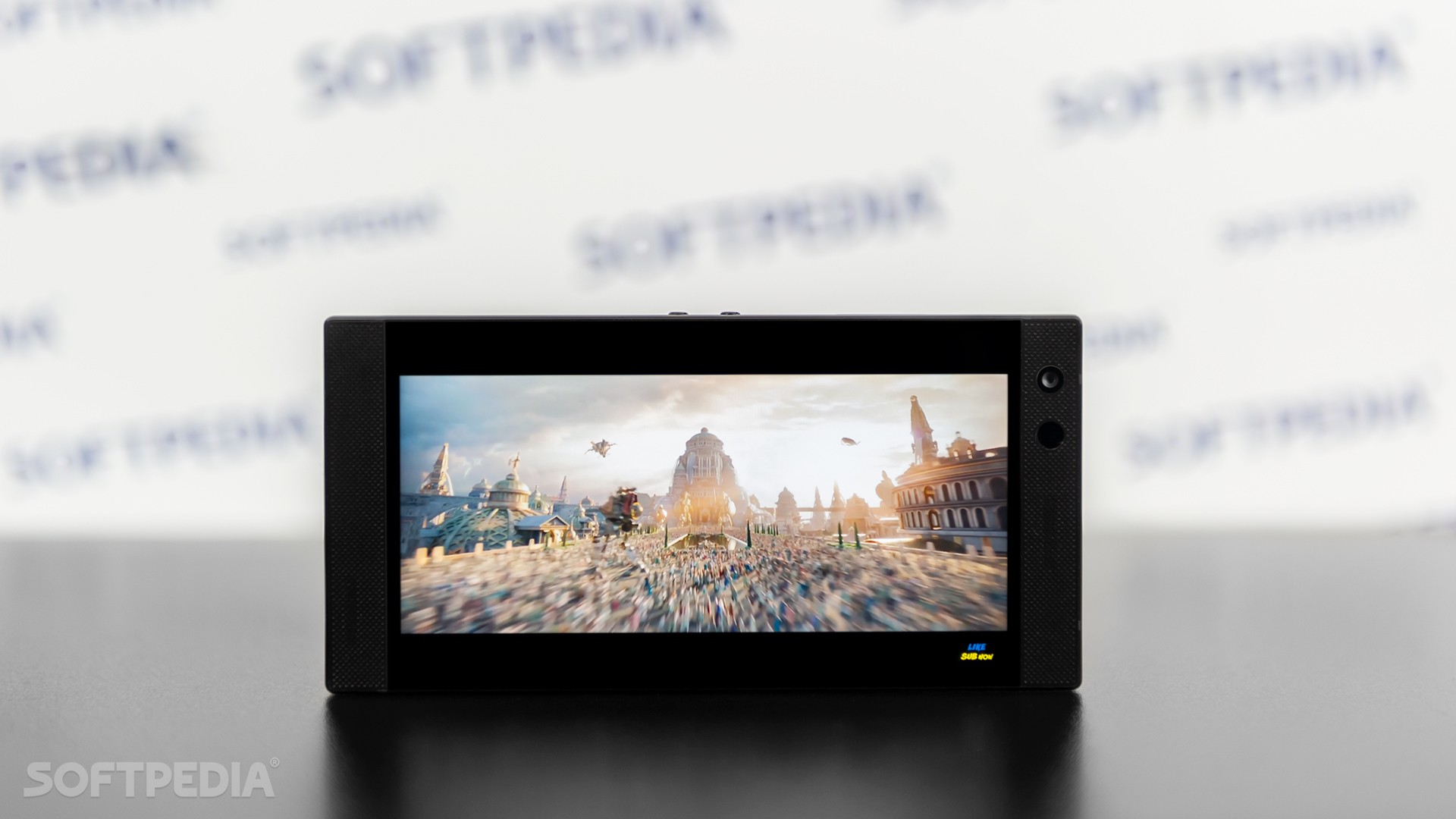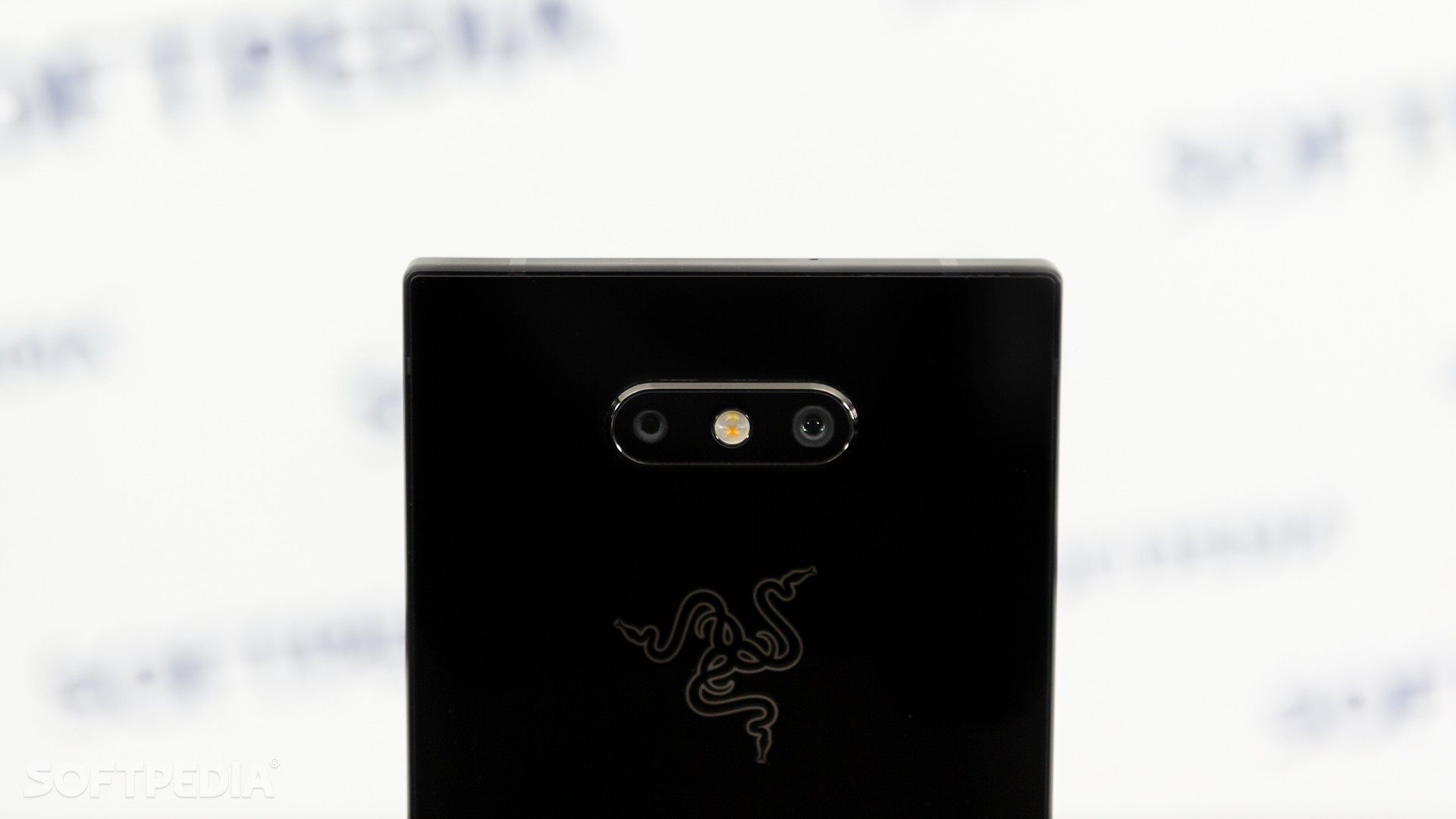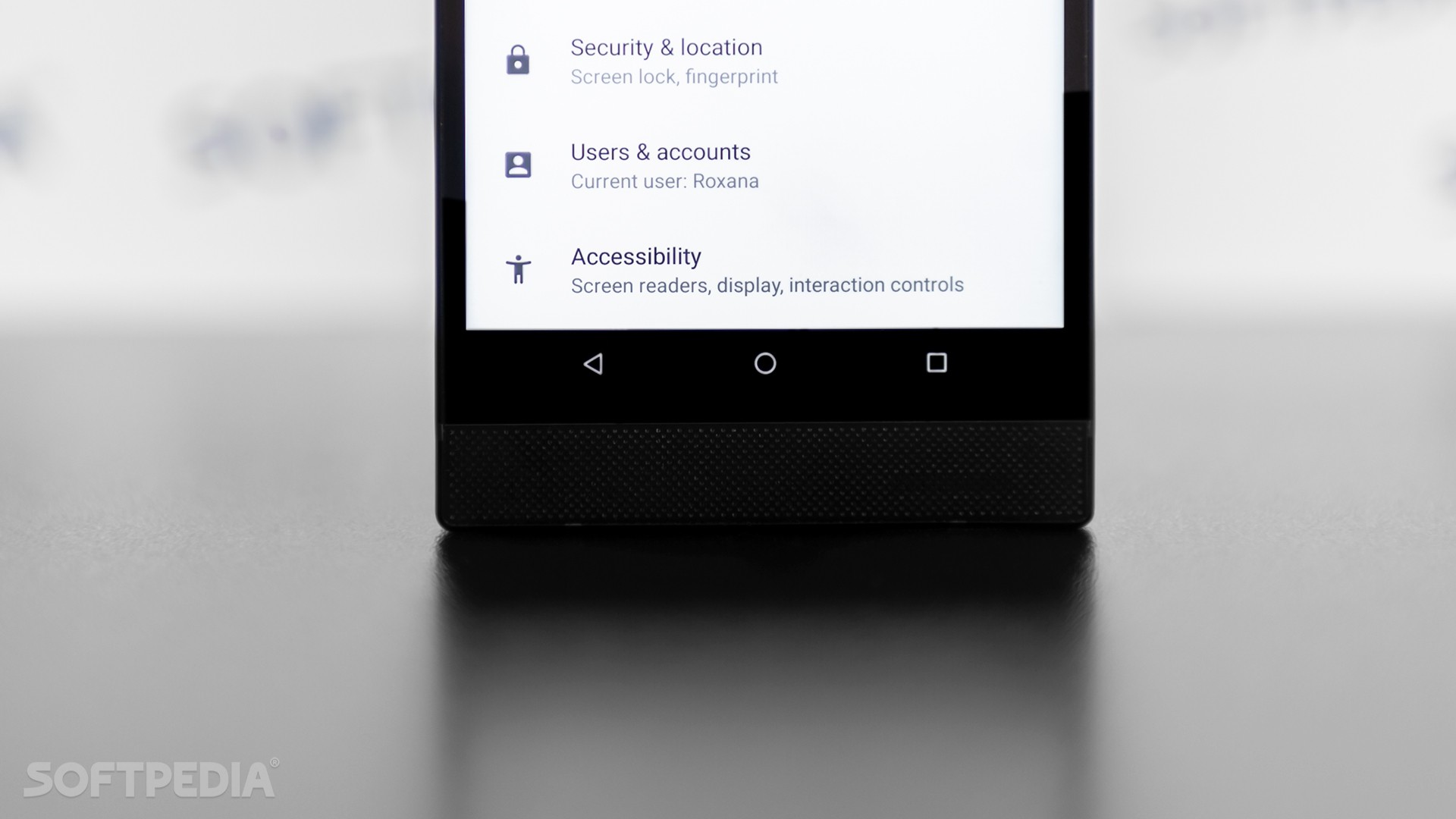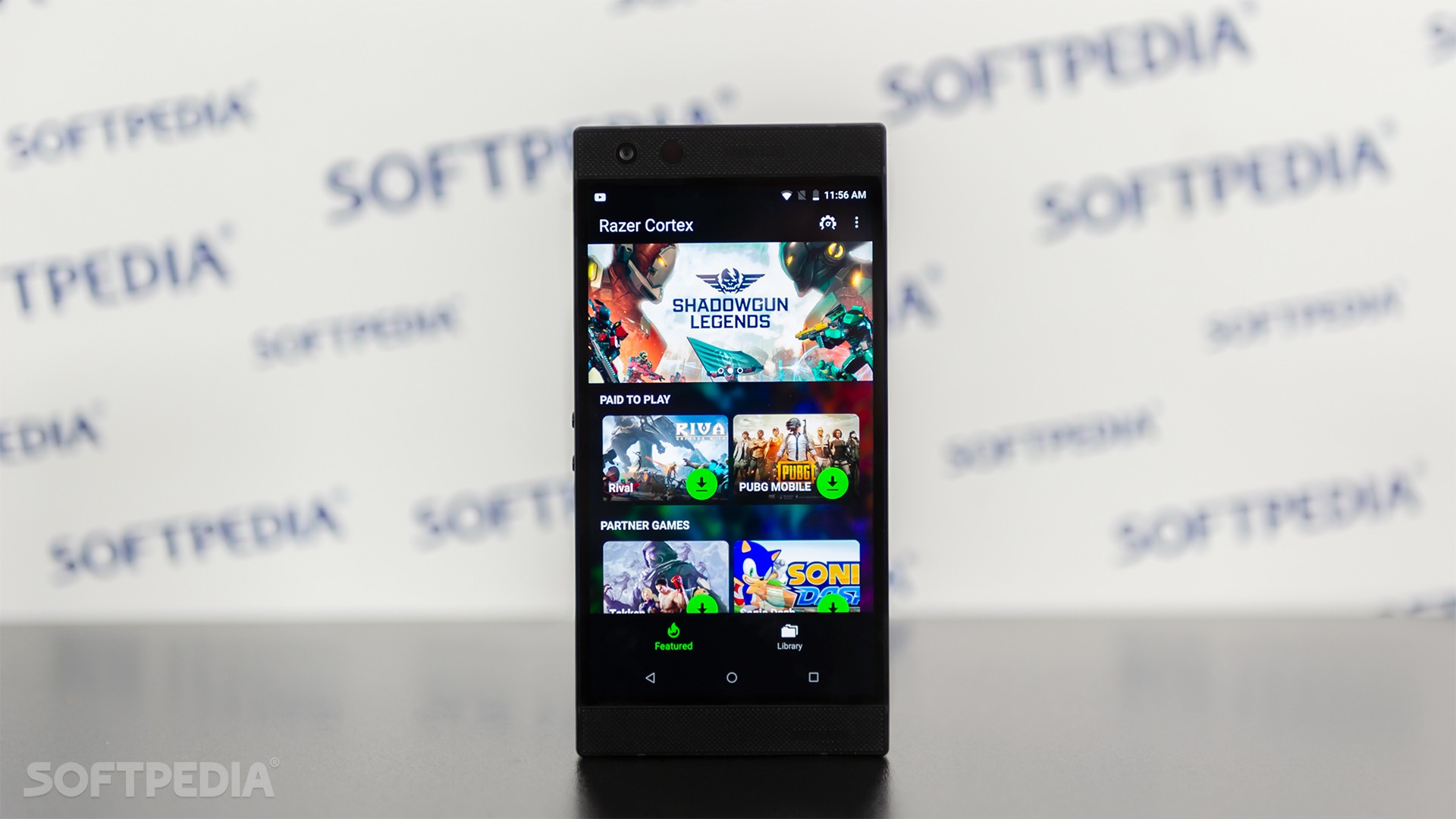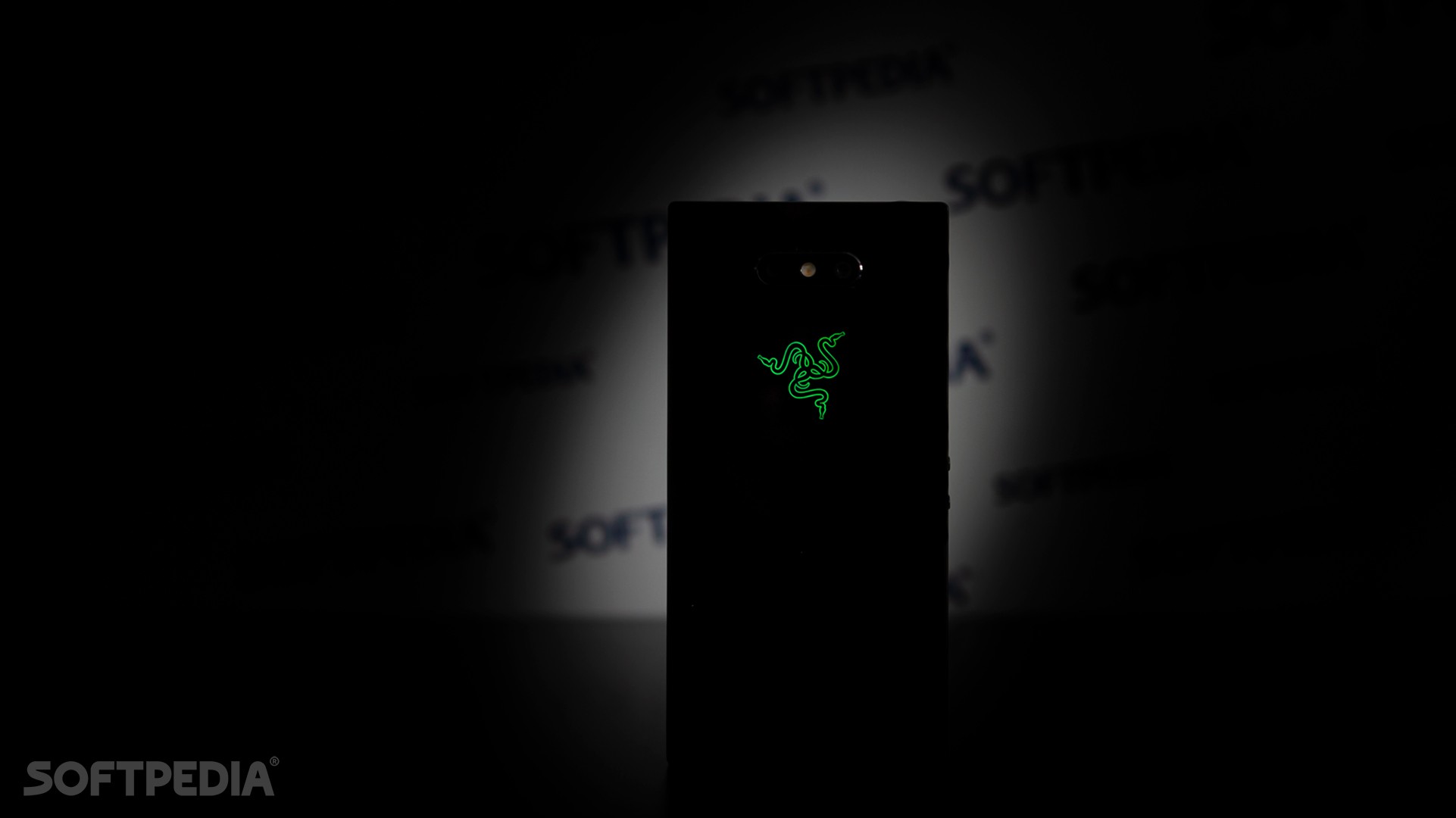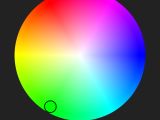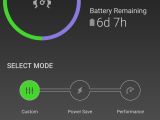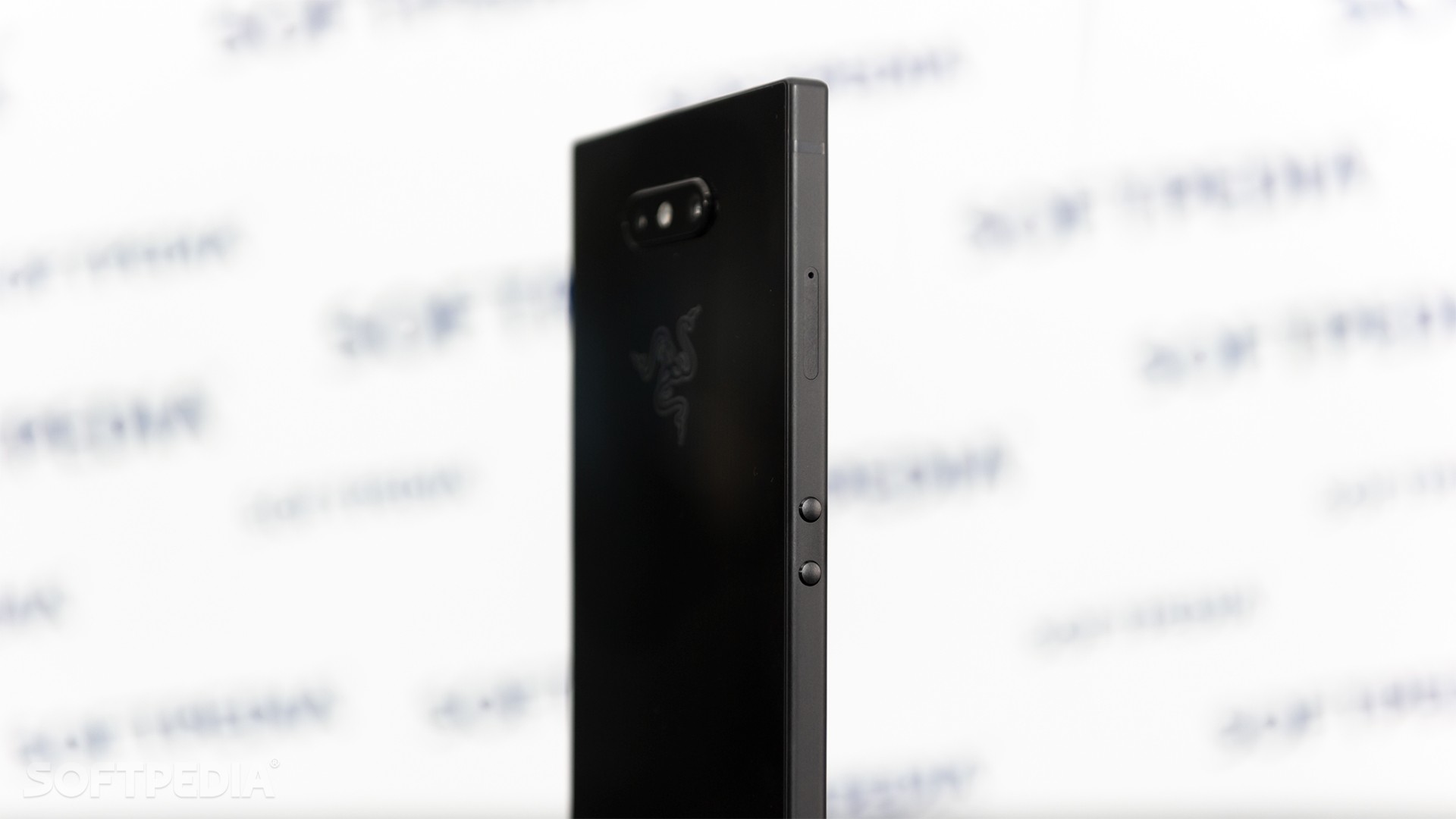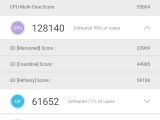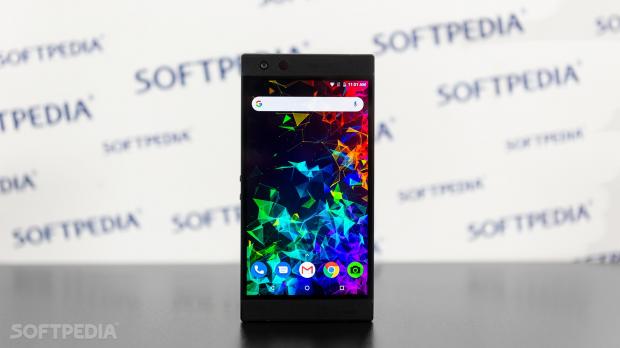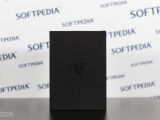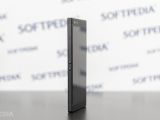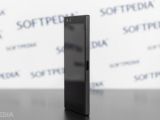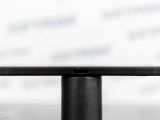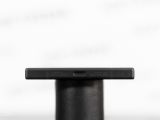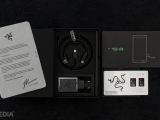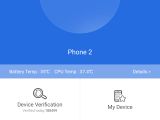If you’ve been living under a rock for the past two years or so, you’re probably wondering what Razer has to do with phones.
And the answer is as easy as it could be. Razer believes that gaming is a niche that exists in the smartphone industry as well, so the company developed its very own mobile device that’s specifically aimed at hardcore gamers.
Like the first-generation Razer Phone, the second model is first and foremost aimed at gamers, but at the same time, it also promises flagship performance with high-end hardware and features that you normally find on the leading Androids out there.
Aesthetically, it’s nearly impossible to distinguish the Razer Phone 2 from the original Razer Phone when holding it in hand. The dimensions are almost unchanged: 158.5 x 79 x 8.5 mm (6.24 x 3.11 x 0.33 inches) on the Razer Phone 2 versus 158.5 x 77.7 x 8 mm (6.24 x 3.06 x 0.31 inches) on its predecessor.
However, the Razer Phone 2 is heavier at 220 grams versus 197 grams on the first model.
In terms of design, there are only small differences, and the Razer Phone retains its boxy look with gigantic front-facing speakers that provide stunning quality. As I see it, this is a love-it-or-hate-it kind of phone when it comes to looks because while I really like it, most of the people that got to see me using it found it rather awkward.
There are no curved edges, notches, or anything like that, though the 5.72-inch IGZO LCD screen comes with a rather outdated 16:9 ratio. With a 72.0% screen-to-body ratio, it’s pretty clear that Razer wasn’t aiming for exquisite looks, but for an appearance that makes sense on a gaming device.
As compared to the original Razer Phone, this upgrade comes with Gorilla Glass 5 for extra protection. Furthermore, Razer has improved the maximum brightness from 380 nits to 580 nits, which means it’s easier to use the device in direct sunlight.
The 120 Hz screen continues to provide impressive performance during gaming and when watching videos, and the response time is amazing. This is actually what makes the Razer Phone so special because as you’ll find out a little bit later, there are several moments when this device just lets you down.
Screen optimizations play a key role, and the IGZO screen really pays off. Not only that animations are super smooth, but colors are also very accurate, and the level of detail of everything you see on the display is remarkable.
Bigger upgrades happen on the back, as Razer has decided to use glass instead of aluminum, basically making the phone look more exquisite. But at the same time, it also makes it more slippery, and for a device that’s supposed to be held tight in hand when playing games, this isn’t necessarily the right way to go. Hands often become sweaty when playing games, so dropping the Razer Phone 2 might be easier than you expect it to be, despite the boxy shape.
The glass back, however, allowed Razer to introduce an RGB illuminated Razer Chroma logo on the back, which can double as a notification light with any color you want. Razer fans are already familiar with Chroma, so this is without a doubt a nice touch. However, while this is a neat addition, I found myself rarely enjoying the Chroma lights, as you have to keep the phone upside down, a thing that I almost never do.
Razer Phone 2 comes with a fingerprint sensor integrated into the power/lock button, and given the boxy design, this approach more or less reminds me of Sony Xperia. However, I noticed that the fingerprint sensor provides a rather inconsistent performance, as it sometimes fails to detect the fingerprint correctly, so you end up having to enter the password to unlock the device.
Additionally, this approach kind of limits your options, as the most natural configuration is to unlock the device with your thumb. This means the Razer Phone 2 makes more sense to be used with the right hand, so lefties might have a hard time at first.
Somewhat surprising is that the Razer Phone lacks a headphone jack, which is a little unexpected on a device that’s primarily aimed at gamers. The USB Type-C port, which is often used for charging, is now the only connector available on the smartphone, so Razer decided to do the same thing like others and include a 3.5mm to USB-C adapter in the box. The device also offers 24-bit DAC, while the stereo speakers come with Dolby Atmos and Dolby Digital 5.1 support.
Without a doubt, the Razer Phone 2 offers one of the best, if not the best, audio experience in the smartphone market, and this kind of makes sense. Gaming without proper sound would just be a waste of time, and given its legacy, Razer certainly knows this best.
The spec sheet is what left me hoping for more, but again, I’m speaking from the point of view of someone who isn’t necessarily interested in gaming, but in what a smartphone can do. The device comes with the Snapdragon 845 processor, which isn’t the latest-generation Qualcomm chip but still offers top performance. It’s paired with 8GB RAM.
Razer installed only 64GB internal storage, and for heavy gamers, this is clearly not enough. Truth be told, microSD card support is also offered, but the built-in storage is faster and eventually helps make the phone feel snappier overall. There’s not even an option to get the phone with more than 64GB storage.
When it comes to the cameras, there’s so much to be improved here. Judging from the spec sheet, the Razer Phone 2 should normally offer flagship performance given that it comes with a dual-camera configuration.
The device is equipped with a 12-megapixel sensor with f/1.8, 25mm (wide), 1/2.55", 1.4µm, dual pixel PDAF, and OIS (not available on the previous model) and with a second 2x optical zoom 12-megapixel sensor with f/2.6, 1/3.1", and 1.0µm. There’s also dual-LED dual-tone flash, HDR, and an 8-megapixel front-facing unit.
On paper, this doesn’t sound disappointing at all, but all the magic vanishes when starting to use the camera in real-life scenarios.
First and foremost, the Razer Phone 2 has a hard time focusing when trying to shoot close-ups, and for some of the samples embedded below, I had to take the same photos several times, mostly because the majority ended up out of focus.
Then, the overall quality of the images leaves a lot to be desired. In strong light, some photos appear to be washed out, while a darker environment ruins pretty much everything. Colors aren’t the most accurate, the level of saturation is often too low, and the amount of details is also below expectations.
If you have the perfect lighting conditions, the Razer Phone 2 can take pretty good photos, but not even in such circumstances it matches the performance of flagships like the iPhone XS, Samsung Galaxy S10, or Google Pixel 3.



Razer Phone 2 comes with a 4,000 mAh battery, and this is enough to get you through the day quite easily. A large battery like this one is nearly mandatory for heavy gaming, and the Razer Phone 2 doesn’t let you down in this regard. Also, you get fast charging and wireless charging, and again, these are must-haves in a gaming niche. What you should know, however, is that the Chroma light on the back significantly affects battery life, so check these settings if you want the best possible autonomy per charge.
In terms of software, like the previous generation, Razer Phone 2 comes with Nova Launcher pre-installed, so you get all kinds of tweaks that you don’t normally find in stock Android. Nova is currently one of the best Android launchers out there, so there’s a good chance you’re going to love this. The number of customizations you are provided with is overwhelming, and you can configure the Razer Phone just the way you like it.
As for gaming, which is the main focus of the Razer Phone 2, I’ll let my colleague Silviu Stahie, who is the resident hardcore gamer here at Softpedia, to share his thoughts. The next paragraphs are his views on the Razer Phone 2.
THE GAMING REVIEW
The Razer Phone 2 is part of a dream that might end up being just that. But we must keep in mind that dreams are also a big driver for the hardware industry. People dream of having impossible things, and some of those dreams materialize years later.
The gaming market is still being under-evaluated and underestimated, even by companies that are in this business. To this day, publishers and gaming studios launch games that are unappealing to players, and those companies don’t seem to understand why their products are failing.
It’s not all that surprising that smartphone makers are among the companies that don’t understand gaming. It’s not always about having the best processor, although that’s good to have. It’s about providing users with a reason to play games on their phones, besides wasting time on the subway.
There are two ways to achieve this goal for mobile gaming. One is to make better games, and we can all agree that, for the most part, the mobile gaming market is a mess. It's basically oriented towards scamming and tricking people into pumping money in microtransactions. There are a few gems, but the majority of titles are terrible, to begin with.
The second way to make people excited about mobile gaming is to change the platform. And you might think that there is not much that could be improved with the current format, but you would be wrong.



Most smartphones today are not designed to be used as gaming devices. For example, just remember how many times you’ve covered the speakers in a game that was supposed to be played in landscape mode. Or how many times a phone shipped with a single speaker for that matter.
Let’s face it: the smartphone industry is not thinking about gaming, although gamers do make a large part of their customers. For now, they are focusing on camera performance, display quality, and other stuff, and gaming is just a byproduct of the ever-increasing processing power.
This is where Razer comes into play. It's a company known for making hardware for gamers, and when they decided to build a phone, it was well understood that it was aimed at people playing games. You can still take pictures, make calls, and all the other stuff, but that is not the primary goal.
Razer Phone 2 is designed in a way that doesn’t leave any middle ground, meaning you will either love it or hate it. The company chose to revive a shape that’s been slowly decommissioned. A phone that uses 90-degree corners religiously is going to turn heads. It’s been quite a while since we’ve seen this in a high-end device, and I believe that it should make a resurgence.
People have been complaining for years that phones are becoming slimmer in detriment to battery power. To this day, many smartphone users would probably agree that they are willing to have a thicker phone if that meant a bigger battery.
Razer Phone 2 is not small. In fact, it’s probably the biggest phone in its class, except for the display. With a thickness of 8.5 mm and a weight of a little bit over 200 grams, this is one phone you’re not going to misplace.
Let’s get some things out of the gate and focus on the gaming part. Razer Phone 2 is based on the Snapdragon 845 platform, has 8GB of RAM, a 1440p display (1440 x 2560 resolution), 513 PPI, and 120Hz refresh rate. The display itself is an IGZO IPS LCD, which is supposed to be the future (for many years).
IGZO stands for Indium gallium zinc oxide, and it’s been used for displays for a long time. The reason why you haven’t heard much about it has to do with the fact that it's difficult to manufacture and has some limitations.
On the other hand, IGZO displays have a couple of features that are ideal for the Razer Phone 2. One is something called natural transparency, and the other is a very low response time. Both of these contribute to great image quality.
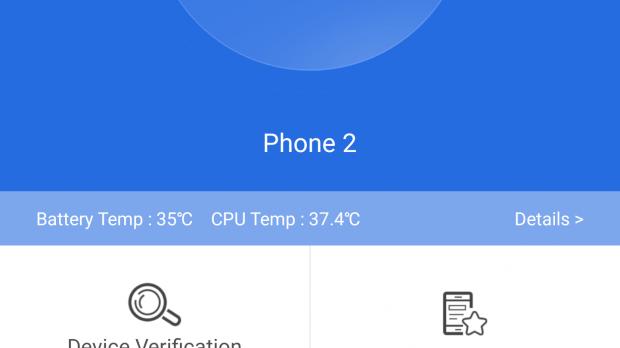

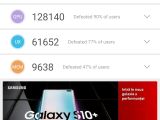
Another feature of the smartphone that’s directly aimed at gamers is the excellent Dolby Atmos dual front-firing stereo speakers that have support for HDR and 5.1 content. They work great in games and multimedia content, and they don’t seem to be covered by your fingers when holding the phone in landscape mode.
I also need to mention the vapor chamber cooling method used to keep the phone at normal temperatures during high workloads. Even so, the phone gets quite hot, and I wonder how it would have performed without such an aggressive technology.
Lastly, it’s nice to see a phone that has dedicated vibration motor for gaming. It’s weird to have the phone vibrate during games, but it should also be something normal for everyone.
Not surprisingly, there is a software side to this gaming approach, as the phone comes with some preinstalled applications. One of those apps is called Cortex, and it shows all the games that are fully compatible with the Razer Phone 2, including a few that can take advantage of the 120Hz display and the dedicated vibration mote.
That doesn’t mean that other games are not going to work, just that there is only a handful which will work well. It’s also quite possible that some apps that are not listed by Razer won’t have any problems making use of the phone’s features.
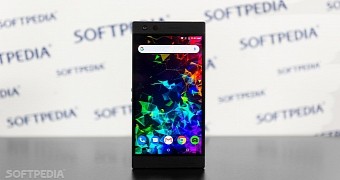
 14 DAY TRIAL //
14 DAY TRIAL // 